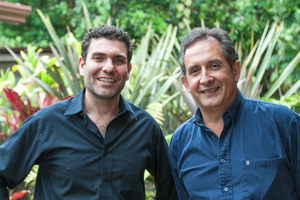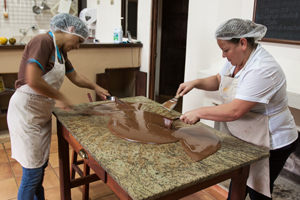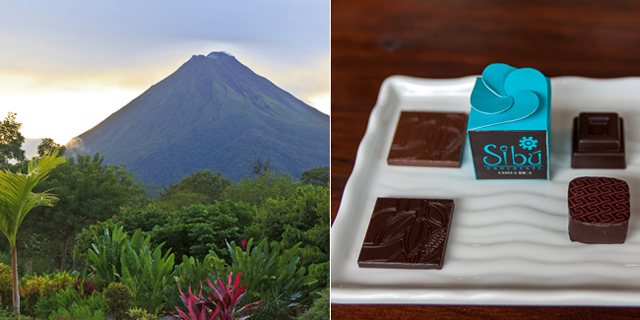The jungles of Costa Rica have been producing cacao, the raw ingredient of chocolate, for more than 3,000 years, yet no one in the country was making quality chocolate until 2007 when journalist George Soriano and historian Julio Fernandez Amon started Sibu Chocolate.
“The idea behind Sibu is to help create a more diversified economy for a developing country like Costa Rica by focusing on making fine 
Well, there was one reason. In 2007 neither George nor Julio knew how to make fine chocolate. However, intensive study with master chocolatiers in France and Italy gave them the skills and experience they were lacking. “Everything can go wrong with chocolate,” Julio says. “It’s not an art. It’s a science.”
The skills they acquired in Europe are apparent in Sibu’s ever evolving line of hand-made, premium quality chocolates available at select stores and hotels in Costa Rica and on the Sibu website. I know because I tasted every single one of them during a delicious afternoon spent with George and Julio, and their chocolate lab Mocachino, at Sibu’s traditionally-designed veranda café and tasting area and petite chocolate cottage workshop where every morsel is made.
But don’t take my word for it. Sibu chocolates also have the taste test seal of approval from Costa Rica’s President Laura Chinchilla who has been known to present visiting dignitaries with Sibu chocolates.
However, great taste was never the sole goal of Sibu, which was named after an indigenous God who spread the seeds of life to create all the plants and animals on earth. “Our chocolate is sourced from a certified organic farm which also is certified sustainable by the Rainforest Alliance,” explains George. That means that no pesticides or agrochemicals were used to cultivate the cacao, workers are well paid and have access to education and health care and the practices on every farm keep environmental impact in mind.
Next what Sibu makes and where you can find them…
[ pagebreak ]
Since debuting five years ago, Sibu has paved the way for other organic chocolate makers and cacao growers in Costa Rica so George and Julio continue to innovate to stay in front of the growing pack. This year their focus is on making their own traditional chocolate pots called chocolateras and wooden mixing tools called molinillos to be used with their delicious drinking chocolate which, after all, is how chocolate was first consumed.
Plan Your Visit
Location: Sibu is located in San Isidro de Heredia less than 10 miles from the center of the capital, San Jose, and just off Highway 32 which leads to the Caribbean coast—perfect for a day trip from the city or as a stopover on your way to the beach.
Tours: Half day private tours (in English or Spanish) are lead by George and Julio and include the history of chocolate, tastings of Sibu products, demonstrations of artisan chocolate techniques and lunch ($40 per person, reservations required, info@sibuchocolate.com).


![Making Mealtime Matter with La Familia: Easy Sofrito [Video]](https://thelatinkitchen.com/wp-content/uploads/2015/10/sofrito-shutterstock__0-500x383.jpg)
![Easy Latin Smoothies: Goji Berry Smoothie [Video]](https://thelatinkitchen.com/wp-content/uploads/2015/12/goji_berry-shutterstock_-500x383.jpg)
















![Fun and Fast Recipes: Fiesta Cabbage Salad [Video]](https://thelatinkitchen.com/wp-content/uploads/2015/11/fiesta_cabbage_slaw-shutterstock_-500x383.jpg)









